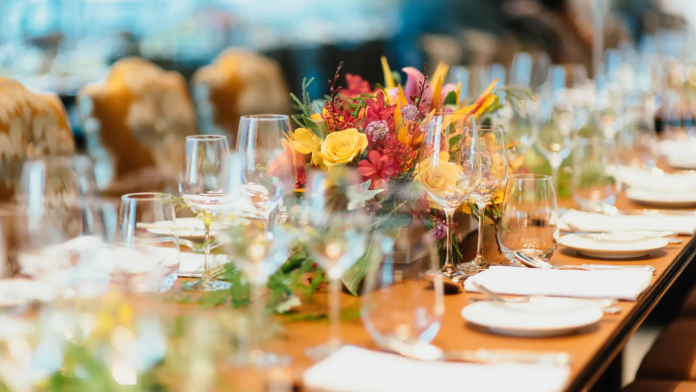The hospitality sector is undergoing a remarkable resurgence, driven by a significant uptick in weddings and associated events. Post-pandemic festivities are reverberating throughout the industry, signaling a significant change in preferences and customs and painting a dynamic picture of evolving traditions. According to the latest projections from CAIT, a substantial rise is anticipated, with around 3.8 million weddings expected to take place this season, in contrast to 3.2 million weddings during the same period last year.
Jaideep Dang, Managing Director of the Hotels and Hospitality Group at JLL, highlights a broader trend, remarking, “In Q3 2023, the hotel sector maintains robust performance growth, primarily propelled by increases in Average Daily Rates (ADRs). This strong upward trajectory, fueled by weddings and the approaching winter holidays, underscores the industry’s adaptability and enduring business appeal.”
Monisha Dewan, Vice President of Sales & Distribution – South Asia at Marriott International, offers a quantitative outlook on this expansion, expressing, “In 2023, weddings and associated events have experienced a notable surge, with an annual average growth rate of around 30 percent, and there is an expectation that this trend will persist into 2024.” This significant upswing, along with its economic implications, positions the hospitality sector as a resilient and strategic participant in the business landscape.
Quantifying this surge in celebrations, CAIT’s estimates project a substantial economic impact. The forecasts suggest that weddings this season are poised to generate a business value of INR 4.74 lakh crore encompassing goods and services, reflecting a notable rise from INR 3.75 lakh crore the previous year. This data not only highlights the changing dynamics of wedding celebrations but also emphasizes the considerable economic contribution of the hospitality sector within the context of business news.
Vikramjit Singh, President of Lemon Tree Hotels, emphasizes this transformation, expressing, “Following the pandemic, there has been a noteworthy rise in the quantity of weddings and associated events.” Beyond being a numerical increase, this trend signifies a strategic shift in consumer behavior within the industry.
A discernible trend in this revival is the inclination toward more intimate gatherings, especially in Tier-1 cities. Singh explains that couples and families are choosing smaller, personalized celebrations. This departure from the conventional grandeur of weddings with over 500 guests is motivated by a practical decision, with events now tailored to a more modest guest list of 200-300 individuals.
At the same time, the economic viability of destination weddings is becoming increasingly evident. Cities like Udaipur, well-known for hosting weddings, are experiencing a consistent flow of tourists in search of the perfect backdrop for their special day.
Somesh Agarwal, Managing Director of Radisson Blu Palace Resort & Spa in Udaipur, notes the strategic appeal of these locations, stating, “We host around 100 weddings a year, from big fat to intimate weddings and ceremonies.” This trend not only reflects a demand for unique settings but also positions these destinations as lucrative business avenues for the hospitality sector.
Capitalizing on this upswing, hotels are forming specialized teams to orchestrate weddings. This strategic initiative not only elevates the overall guest experience but also creates supplementary revenue streams. The influence extends beyond the hotel premises, offering a substantial boost to related sectors.
As per the CAIT report, the calculations encompass a breakdown of expenses, with five percent allocated for banquet halls, hotels, and other wedding venues, another five percent for event management, twelve percent for tent decoration, ten percent for catering services, four percent for flower decoration, three percent for travel and cab services, two percent for photo and video shoots, three percent for orchestra and band services, three percent for lights and sound, and the remaining three percent for miscellaneous expenses.





